 |  |  | ||||
 |  |  |  | |||
 | ||||||
 | ||||||
 | ||||||
 | ||||||
 | ||||||
 | ||||||
 | ||||||

Lazare Nicolas Marguerite Carnot
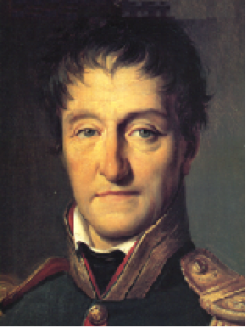
(Nolay 13 May 1753 – Magdeburg 2 August 1823)
Second son of Claude Carnot. Brother of Claude-Marie Carnot-Feulins. Father of Sadi (physicist) and Hippolyte (statesman).
General, statesman and scholar. Knight of Saint-Louis. Grand Officer of the Legion of Honor. Decorated with the Ordre du Lis. Member of the Institute. Comte de l’Empire and Pair de France. Known as the Organizer of the Victory or the Grand Carnot.
By 1783, he was a Captain in the Royal Corps of Engineers, but was limited in his military and marital ambitions due to his modest origins. Nevertheless, he joined the French Revolution and went on to be elected Deputy of the Pas-de-Calais in the Legislative Assembly, then in the Convention where he sat with the Deputies of the Plaine. He later rejoined the Montagnards. As a member of the Committee of Public Safety (July 1793), he was in charge of military affairs and created the fourteen armies of the Republic. Sent on a mission with the Northern Army, which was led by Jourdan, he contributed to the victory of Wattignies (16 October 1793). Socially moderate, indeed even conservative, he took a stand against Robespierre, Couthon and Saint-Just during the 8 and 9 Thermidor (26-27 July 1794). Member and President of the Directory in 1795, he was removed from his position after the coup d’état of the 18 Fructidor, Year V (4 September 1797). Recalled after the 18 Brumaire, Year VIII (9 November 1799), he was named Minister of War by Bonaparte. He resigned in 1800, and became a member of the Tribunate. Hostile to the Consulate and the Empire for the rest of his life, he retired from public life, dedicating himself to scientific research until 1814. He then, in his function as Governor, participated in defending Antwerp. Home Secretary during the Hundred-Days, he was banished for regicide in 1816 (Lazare voted for the death of Louis XVI and refused deferment of the sentence). He died in exile in Magdeburg. His ashes were transferred to the Pantheon on August 4, 1889 during the seven-year presidency of his grandson, Sadi Carnot.
Lazare Carnot is also known for his scientific works. In his Essay on Machines in General (Essai sur les machines en général), he developed in detail the laws of collisions and set forth the law of energy conservation. With his Geometry of Position (Géométrie de position) (1803), he emerges—at the same time as Monge—as one of the founders of modern geometry.
Nicolas Léonard Sadi Carnot
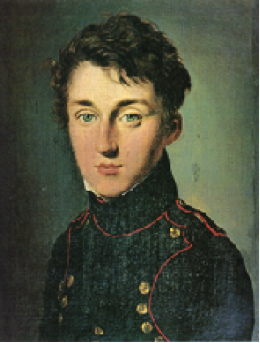
(Paris 1 June 1796 – 24 August 1832)
Eldest son of Lazare Carnot, brother of Hippolyte. Physicist known as the founding father of thermodynamics.
After having attended Charlemagne High School, Sadi was received twenty-fourth at the École Polytechnique in 1812, at the age of sixteen. He graduated at the top of his class in Artillery. He fought against the Allies with the Polytechnicians’ Battalion during the defense of the Vincennes Fort in 1824.
As a candidate to join the General Staff in 1819, he was accepted with the rank of Lieutenant. He had achieved the rank of Captain in the Corps of Engineers by the time he left the army in 1828 to settle in Paris. He died there of cholera at the age of thirty-six. He had no heirs.
Sadi Carnot is known as the founder of thermodynamics. In 1824, he published at his own expense, Reflections on the Motive Power of Fire and on Machines Fitted to Develop this Power.It is in this book—of less than a hundred-and-twenty pages, with a limited printing of only six hundred copies—that he founded what we call today the Second Law of Thermodynamicsor Carnot’s Principle. He also discovered the first principal, that of energy conservation, before the end of his life, as is shown in his essays published posthumously in 1878.
Lazare Hippolyte Carnot
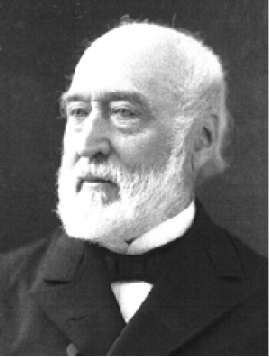
(Saint-Omer 6 August 1801 – Paris 16 March 1888)
Second son of Lazare Carnot. Father of the President of the French Republic, Sadi Carnot, and also of Adolphe Carnot. Deputy, Minister and member of the Institute.
Hippolyte shared in his father’s exile at Magdeburg, condemned as a regicide in 1816. Hippolyte returned to France in 1823, where he advocated for a while Saint-Simonian ideas. He contributed for several years to the newspaper Le Producteur before departing from the ideas of Enfantin, who was the main propagator of Saint-Simonianism.
After having played an active role in the Revolution of July 1830, Hippolyte was elected Deputy of Paris (1839-1849). He declared himself in favor of the Republic after the Revolution of February 1848 and was named Minister of Public Instruction in 1848, the year in which he founded the first School of Administration (Ecole d’Administration). Elected to the Assembly in 1850 and 1857, he lost his seat when he refused to take the oath of allegiance to Louis-Napoleon (Napoleon III). He became a member of the Legislative Body in 1864, then Republican Deputy in the National Assembly in 1871, and went on to became Senator for life in 1875.
François Marie Sadi Carnot
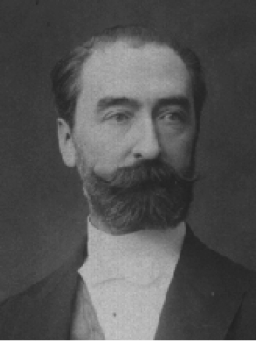
Limoges 11 August 1837 – Lyon 24 June 1894
Son of Hippolyte Carnot, brother of Adolphe Carnot and father of Ernest Carnot.
Deputy, Minister, President of the French Republic.
Admitted fifth to the École Polytechnique in 1857, he entered the École des Ponts et Chaussées in 1860, graduating at the top of his class in 1863. He was at first Deputy Secretary to the Superior Council of Civil Engineering, then Chief Engineer of Haute-Savoie. After the fall of the Second Empire in 1871, he was named Prefect of the Seine-Inférieure and elected Deputy of the Côte-d’Or (Burgundy).Undersecretary of State for Public Works, then Minister of Public Works, he became Minister of Finance in 1885. Following the resignation of Jules Grévy who was involved in the medals scandal (Scandale des décorations), Sadi Carnot was elected President of the French Republic on December 3rd, 1887. The beginning of his mandate was marked by the Boulangist agitation (he signed the decree forcing the retirement of General Boulanger), the rallying of many Catholics to the Republican system of government (1890) and the Panama scandals (1892). Casimir-Perier had just pushed through the “lois scélérates” to repress union agitations and anarchist movements, when the Italian anarchist Caserio assassinated Carnot on June 24th, 1894 during the Lyon Exhibition.
He is buried in the Pantheon (Paris) next to Lazare Carnot, his grandfather.
Ernest Claude Jean Carnot
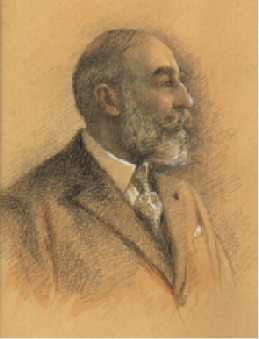
(Annecy, 26 December 1866 – Paris, 15 January 1955)
Second son of the President of the French Republic, Sadi Carnot. Graduating as a Civil Engineer of Mines and with a Bachelor of Law, Ernest Carnot became an entrepreneurial and influential businessman. He occupied a dominant position in the synthetic textiles industry. In 1903, he founded the Viscose Française, for which he created subsidiaries or sister companies in Switzerland, Spain, Italy and Belgium. He also createdCellophane in 1913, which he managed until 1930. He presided over the Société de Participation de Rayonne from 1905 to 1922. He managed the Compagnie des Transports Océaniques, the Compagnie Seine et Rhône, the Messageries Maritimes, the Compagnie Asiatique et Africaine, the Société Coloniale de Bambas and the Compagnie Tunisienne des Phosphates du Djebel-Mdilla. He was one of the hundred-and-twenty-one largest individual shareholders of the Banque de France before the Popular Front (1936). He was also one of the founders of the Mines de Spassky and served as president of the Grande Comore.
For the first time in the history of the Republic, four generations of one family succeeded each other in the National Assembly. Elected Deputy of the Côte-d’Or, Ernest Carnot sat in the Assembly from only 1895 to 1898. In 1895, he was also elected General Counselor of the Canton of Nolay and in 1901 he gave up his seat in the Departmental Assembly of the Côte-d’Or.
Lazare, Joseph, Léon Carnot
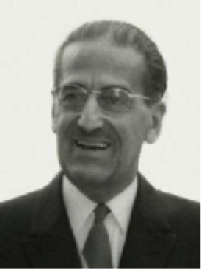
(Paris 9 novembre 1903, Paris 20 juin 1990)
Grandson of Sadi Carnot, President of the Republic.
Son of Ernest Carnot, founder of businesses in the new technologies of the time, and of Marguerite Chiris, descendant of the perfumers of Grasse. He studied at the Janson-de-Sailly High School in Paris, and then at the École nationale des mines de Paris, where he graduated as an engineer in 1926.
Unlike his father, he decided to assume management responsibilities within the Société de la Viscose française created by Ernest Carnot in 1903.
Mobilized during World War Two, he was a well-respected and influential officer. He was decorated with the Military Cross (1939-1945), and the Combatant’s Cross.
He was named Director in 1935, and then became the General Manager of the CTA (Compagnie des Textiles Artificiels et Synthétiques) from 1944 to 1962. He bore the heavy responsibility of restarting the factories that had been shut down or partially destroyed during the War. From 1947, he established “business committees”. He was President of Cellophane From 1955 to 1961 and then President of Pricel from 1962 to 1966 (after the merger of CTA and Rhône-Poulenc, Celtex was renamed Pricel).He was a business leader who listened to his staff, thus creating the conditions of a permanent social dialogue. As an employer, his personnel respected him for his sense of justice. His role as an industrial leader led to his induction into the Knights of the Legion of Honor on the 23rd of May 1951.
He resigned in 1966, in order to devote himself to his “violons of Ingres”: genealogical study, classification of family archives, art collection.He kept administrative positions in Rhône-Poulenc S.A., Rhodiaceta, Pricel, Compagnie financière de Suez, Union parisienne, and Compagnie d’activités associées.
He married Miss Marie-Rose Françoy on the 2nd of September 1936, and had 4 children: Jean-Marie (killed in service for his country), Gaëtan, Marie-Cecile (Mrs. François Sauvy), May-France (Mrs. Kevin Muench).
Gaëtan, Marie, Emmanuel, Lazare Carnot
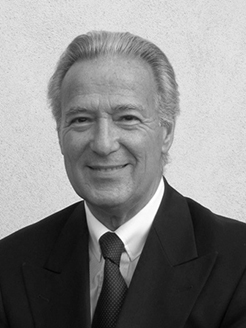
(Born in Paris on October 5th, 1938)
Son of Lazare Carnot and Marie-Rose née Francoy
He studied at lycée Janson-de-Sailly in Paris before attending the École Polytechnique Fédérale de Lausanne (Switzerland) in Physics.
He first worked for Rhône-Poulenc Textile as manufacturing Engineer and ended as Business Plan Director. Together with some associates he created in 1970 the Compagnie Financière de Développement which bought, re-orgnaized and sold small and middle size companies.
In 1978 he moves to Geneva with his family and joins the Société Privée de Gérance where he develops European investments in american real estates. In parallel he takes over Landauer Associates one of the oldest commercial real estate company which manages and sells commercial buildings in USA.In 1984, Gaëtan Carnot creates in Geneva his own Wealth management company named IncaVal. In 1989 he takes over the international clientele of the First National Bank of Chicago (Geneva). The company obtains its Swiss bank licence with the name IncaBank (International Capital Bank).
In 1997 he sells the bank and regroups its activities in a family office where he continues to invest in industries real estate companies as well as investing in Hedges Fund. Simultaniously he creates with his sisters the Fondation Carnot under the aegis of the Fondation de France.Married to Miss Elisabeth Sauvy since January 1965 he has 3 children: Isabelle (Madame Bruno Delale), Lionel and Stéphane and 11 grand children.


